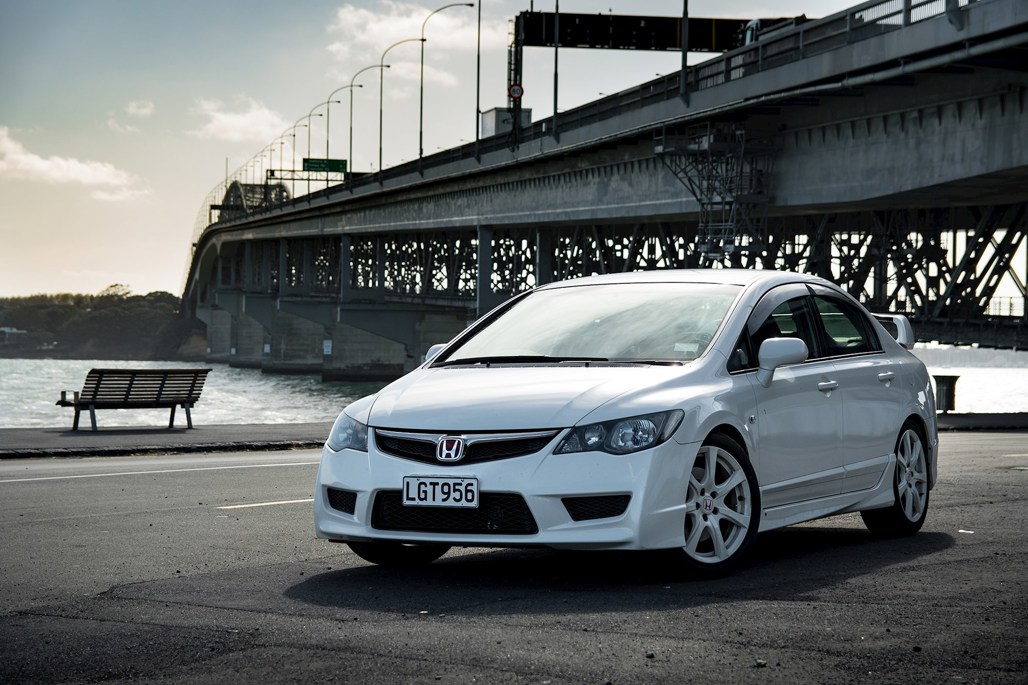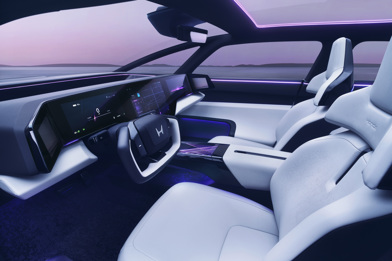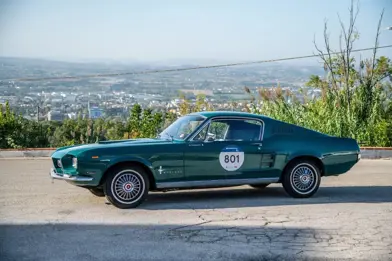"So, what are you buying?"
"Just a new car."
"Oh, what kind?"
"A Honda Civic."
The bank teller pauses for a moment. I can feel her eyes dart from her keyboard to the amount of money I'm sending to Japan ... here it comes.
"... is it a new one?"
Being a car enthusiast these days can be grating. Generally, we're misfits in the eyes of the greater public — a sea comprising of boy racers, poor economists sinking money into assets that are sure to lose value, or the environmentally dense.
Having to explain to the bank teller that the Civic I was paying for 'was a good one' underlined this, namely because in a lot of respects that's a bit of a lie.
The 2007 Honda Civic Type R isn't beautifully styled, packed with features, or particularly fuel efficient. It's among the most horrifically uncomfortable cars I've ever set foot in, and since everything's white it's perpetually filthy.
I've always sided with underdogs, and this Honda is very much that. Next to the Mitsubishi Evo and Subaru WRX STi jocks, the Civic was the nerd late for Science 101 after spending lunchtime at the library.
The K20A under the bonnet develops 165kW and 215Nm, taking about six seconds to hit 100km/h. Some will claim it'll do it in a high five, in the same way that I claim the foot-long meatball sub I had for lunch is 'healthy' because it had lettuce in it.
I decided I wanted one about three years ago. A friend who'd bought a Honda Civic EK (that's the late-'90s hatchback) wanted a photographer at a track day, so I tagged along. It was full of go-fast bits, which got me excited off the bat.
But I remember being disappointed almost straight away. In general commuting it felt slow, underdone. Lots of road noise leaked in, and being an old hatchback it was also pretty cramped. Then we stopped at 'Collision Crossroads' in Pukekohe for fuel, and everything changed.
The on-ramp heading south is a glorious wide bit of road, and ideal for testing a car's ability to get to 100km/h. And that's what my mate did; rowing the B-series through the gears, smacking red-line in first, second, and third. The power delivery was unlike anything I'd ever experienced before, coupled with that familiar ringing VTEC engine note. I decided then and there that one had to get onto my driveway.
Yes, VTEC ... that elephant in the room. The topic of everything ranging from swooning ecstasy to jokes, lots of jokes. It's a curious technology; one that numerous manufacturers utilize. But Honda's is different. It's loud, it's clearly discernible. If I had to describe it, it's a little bit like conversing with a high-school crush.
Let me explain.
Cast your mind back to the halls of your last schooling experience (if you're a young'un, cast your mind back to last Tuesday). Getting told off for wearing your socks too low or ear-rings that were too showy or whatever else teachers could pick up to pass the time between classes.
For those who weren't that fond of 'learning', making friends was about as good as school got. Apart from if you decided one day that you'd ask one of those friends to ... umm ... 'explore the next level'.
With the gift of hindsight, most high-school crushes are illuminated as nothing more than flashes in a pan and nothing more (save for those lucky few, to whom I applaud). But in the moment, when you're considering asking them out to the movies or ... whatever young people ask people out to these days, your heart races and bullets of sweat pour down the back of your neck.
In a nutshell, this is VTEC.
The nature of the way power is delivered to the front wheels forces drivers to evaluate all their options before committing with their right foot — "is there traffic around?" ... "Have I got enough space?" ... "Is the scanner on?"
Then when you decide to go, the engine starts off slow but changes completely in the tall power-band, switching from a pithy Justin Bieber soundtrack to some hard dance music bangers at around 5,500rpm. VTEC shift lights illuminate at the top of your dash, and if you use enough of the power band a sharp shift will keep you in it for the next gear. At which point the anxiety/excitement cycle begins again.
But despite the noise and theatre, the big number at the top of the dash never gets too large. You're never quite going as quick as you think you are, and at the same time you appreciate the art of going quick in one of these.
There's barely any interior tech to distract or detract, and no big-capacity V8 or forced-induction 'charger there to do all the work for you.
Researching dug up one big surprise; Honda made two Civic Type Rs in the mid-00s, and they were both completely different.
In the red corner was a four-door sedan designed and built in Japan, and in the blue corner was a two-door hatchback designed and built in the UK — known as the FD2 and FN2 respectively.
It's very rare, and very weird, for any manufacturer to develop two different cars from the ground up in different parts of the world with the same nameplate ... yet here was Honda, placing a buck each way.
The pairing shared some similarities. Both had a naturally aspirated K20 engine, were front-wheel drive, and had lots of little red badges.
But beyond that, they couldn't be more different. The UK model looked like a spaceship, and came loaded with features like cruise control, parking sensors, a chilled glove box for some reason, and much more.
The Japanese model on the other hand had none of these things. In fact, it was excruciatingly light on features, and it looked a bit like a rental car with a wing screwed to the bum.
Yet, in the performance stakes things flipped on their head. The Japanese FD2 came with more power (165KW to the Euro's 148kW) and torque, and somehow less weight even though it was much bigger and had two more doors.
Underneath there was even more difference. The UK car skipped having a limited-slip diff until its final model year, and tossed away the independent rear suspension the previous model had in favour of an inferior torsion-beam rear end. Subsequently, British critics slammed it almost straight away — seeing it as a step backwards in the Type R lineage.
The Japanese FD2 meanwhile had all these things, as well as a chassis that was stiffer than and almost as light as the two-door sports car Integra DC5 Type R. Brembo brakes, functional aero, and more just added to the incredibly over-engineered mix.
I reckon there might've been a bit of a war going on at the time inside Honda. Japan wanted the Civic Type R to continue the ethos of its forefathers, while England didn't think its buyers would want a car that was so firm and so sparse. The former, released in just two countries from new, is becoming more sought after — the latter, released across Europe, Japan, Australia and others, less so.
These two cars would later become the last two naturally aspirated VTEC Type Rs ever made, thanks to international emissions regulations that came in a few years later. The end of a silly, fun era.
Honda still make a Civic Type R of course. It's a wonderful car — a car we quite like in this office — but as monumentally capable as it is, it lacks the same unique punch and cheek of the old firm.
A friend recently told me that these cars will be looked back on as the BDA Escorts of my generation. He might be right.
But don't blame Honda. Characterful little engines like these have kicked the bucket all over the motoring sphere in recent years, in exchange for turbocharged units that are easier to hit emissions standards with.
In the meantime, I wanted to own one of my own.
I nabbed this one out of Japan late last year. The import process is a fun one, and can save you a few bob here and there if you tread carefully. Though there's always an element of added risk compared to buying locally, whether it's hidden issues or ... you know ... when your boat is full of bloody stink bugs.
Having been cleared of any stink-buggery, it's been parked in my driveway for almost two weeks. A clean and original example with nothing more than a few garnishes of 'Spoon Sports' caps and socks under the bonnet.
Getting test cars is fun and all, but nothing beats having one of your own — and every time I pull the little key with the red 'H' out of my pocket, I get goosebumps.




